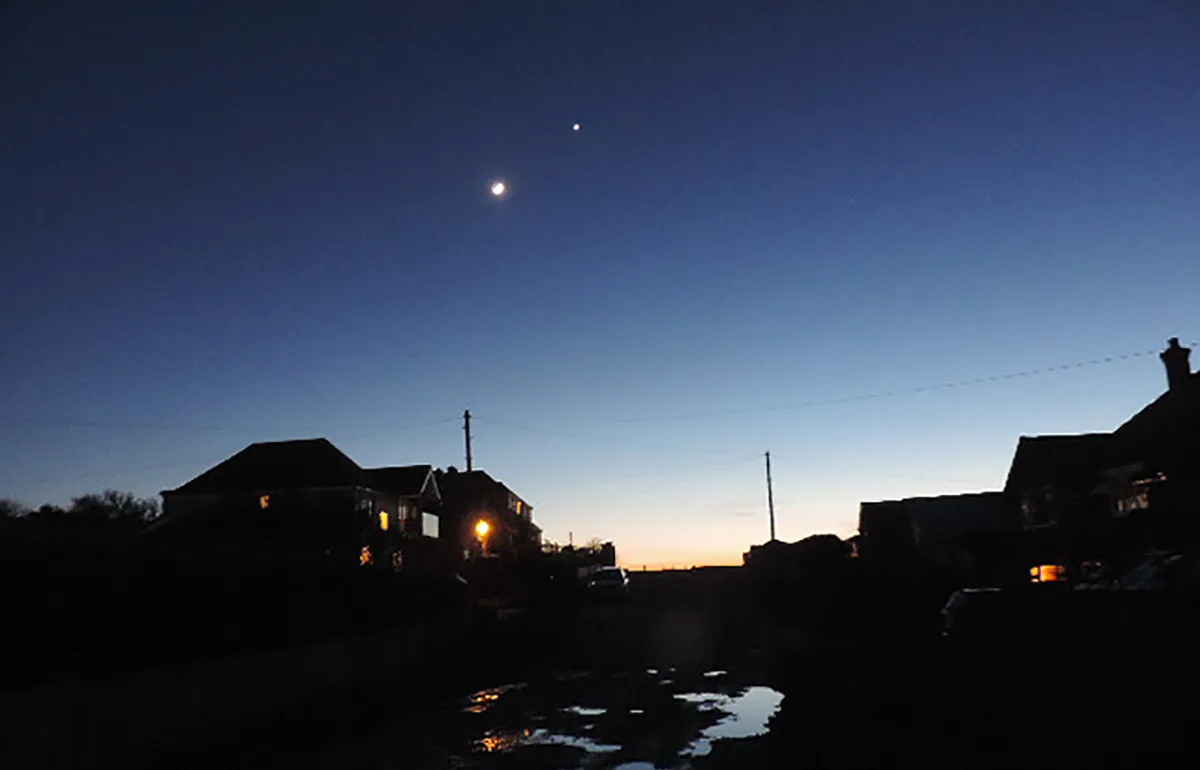This month Venus reaches a point in its orbit known as greatest western elongation, a position where the angle between Earth, Venus and the Sun is 90˚, and the planet appears to be at its furthest west of the Sun. As a result, on 13 August it will appear separated from the rising Sun by 46˚.
- Remember: do not attempt to view the Sun without using specially-designed equipment
In addition, the geometry of the situation means that Venus should appear to exhibit a 50%-lit phase at this time, but this is often not the case due to what’s known as the Schröter Effect.
Believed to be due to the atmospheric scattering of light in Venus’s thick atmosphere, the Schröter Effect causes the 50%-lit phase to occur a few days early when Venus is in the evening sky at greatest eastern elongation, and a few days later than would be predicted by geometry when Venus is at greatest western elongation.
Interestingly, when you use a mid- to high-power telescope it’s possible to see the phase slightly offset through different colour filters. For example, through a blue filter the phase often looks slightly less than if you try a yellow or red filter.

If you’re visually observing the planet, make estimates of the percentage it is lit – how far the terminator extends across the entire disc – and see when you think the point of dichotomy or 50%-illumination occurs.
Venus will remain in the morning sky for the rest of 2020, finally lining up with the Sun once more – on the far side of its orbit – at superior conjunction on 25 March 2021.
Venus was the beacon of the evening twilight sky during the first half of 2020, but rapidly left the scene during May as it approached inferior conjunction on 3 June.
After this it reappeared in the morning sky, moving quickly away from the Sun as it traversed the part of its orbit close to Earth.
Pete Lawrence is an experienced astronomer and a co-host of The Sky at Night. This guide originally appeared in the August 2020 issue of BBC Sky at Night Magazine.
